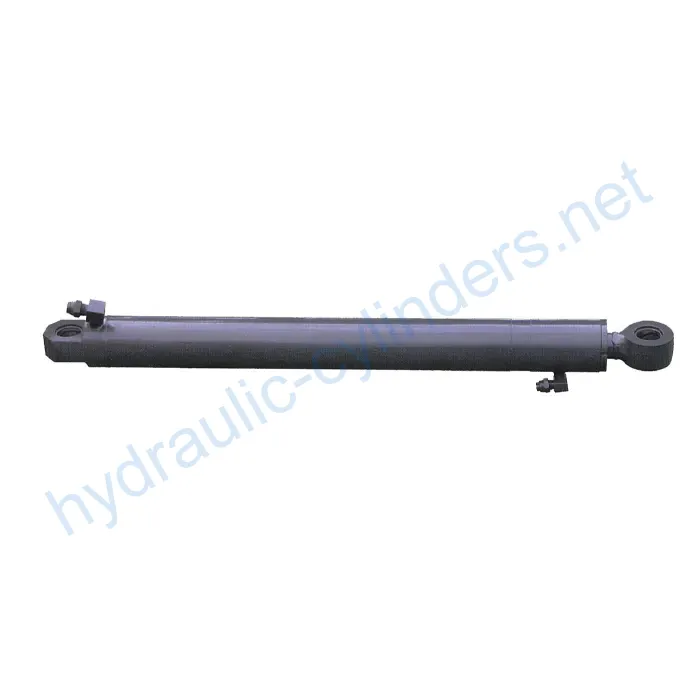Arm Cylinder For Bonny CED260-6
In qualità di uno dei produttori, fornitori ed esportatori di prodotti meccanici, offriamo cilindri idraulici e molti altri prodotti.
Per maggiori dettagli, contattateci.
Posta:sales@hydraulic-cylinders.net
Produttore fornitore esportatore di cilindri idraulici.
Arm Cylinder For Bonny CED260-6
Arm Cylinder, as the name suggests, is a specialized hydraulic cylinder designed to provide linear motion and power to the arm of various machinery such as excavators, cranes, and mechanical arms. These cylinders play a crucial role in hydraulic systems, allowing for effective movement and control of additional tools or attachments. Not only do these cylinders enable smooth motion, but they also withstand heavy loads, ensuring efficient operation and reliability of the machinery in various working conditions.

Features of Arm Cylinder For Bonny CED260-6
High Efficiency Transmission: The Arm Cylinder provides powerful linear motion and force, ensuring high performance of the mechanical arm in various operations.
Precision Control: Through the hydraulic system, the Arm Cylinder enables precise motion control, making the operation of additional tools more flexible and accurate.
Strong Durability: Arm Cylinders are typically made of high-strength materials, offering excellent wear and corrosion resistance, suitable for long-term use in harsh environments.
Multi-functional Adaptability: These cylinders find widespread application in various machinery such as excavators, cranes, and mechanical arms, adapting to different working requirements.
Easy Maintenance: The design considers easy maintenance and replacement, making regular inspection and upkeep convenient while minimizing equipment downtime.

Applications of Arm Cylinder For Bonny CED260-6
Arm Cylinders are widely used in various industries for different applications:
Construction Engineering: In excavators and cranes, Arm Cylinders control the motion of buckets or booms, carrying out earthwork, material handling, and structural installations.
Manufacturing Industry: In automated production lines, Arm Cylinders enable the movement of mechanical arms for processes like assembly, welding, and handling, enhancing production efficiency and accuracy.
Agricultural Machinery: In agricultural equipment such as harvesters and seeders, Arm Cylinders control the movement of operating arms, performing tasks like seeding, fertilizing, and harvesting.
Mining: In mining equipment, Arm Cylinders control the arm movement of mining machinery, facilitating ore excavation and transportation.
Logistics and Transportation: In forklifts and handling robots, Arm Cylinders control the lifting and movement of forks, enabling material handling and stacking.
Design Considerations and Selection Criteria
When it comes to designing Arm Cylinders, several factors and criteria come into play:
Load Capacity: Arm Cylinders are designed to handle specific loads, ensuring optimal performance and safety in different applications.
Sealing: Various sealing components such as piston seals and rod seals are used, made of wear-resistant materials like polyurethane and nitrile rubber. The cylinder body and threaded end surfaces undergo fine treatment to enhance wear resistance.
Durability: Arm Cylinders are manufactured using high-quality materials and precise machining techniques to ensure durability and longevity in demanding environments.
Safety: Safety considerations are of utmost importance in the design of Arm Cylinders to prevent accidents and ensure the well-being of operators and surrounding personnel.
Maintainability: Design features are incorporated to facilitate easy maintenance and repair, minimizing downtime and maximizing operational efficiency.

Sealing and Lubrication of Arm Cylinder
Arm Cylinders utilize various sealing components and require periodic lubrication:
Sealing Components: Arm Cylinders employ piston seals, rod seals, and other sealing elements made of wear-resistant materials such as polyurethane and nitrile rubber.
Cylinder Body and Threaded End Treatment: The cylinder body and threaded end surfaces undergo meticulous treatment to enhance wear resistance.
Regular Lubrication: Adequate hydraulic oil is required for lubrication, and the appropriate amount needs to be added at regular intervals to ensure smooth operation.
Regular Inspection and Preventive Maintenance
To ensure the optimal performance and longevity of Arm Cylinders, regular inspections and preventive maintenance are essential:
Inspection: Regularly inspect the Arm Cylinder for any signs of wear, leakage, or damage. Pay attention to the condition of sealing components and the overall performance of the cylinder.
Preventive Maintenance: Follow recommended maintenance intervals and perform preventive tasks such as cleaning, lubrication, and replacement of worn-out components.

Proper Installation Guide for Arm Cylinder
Proper installation of the Arm Cylinder is crucial for its optimal functioning and longevity:
Refer to the manufacturer’s installation guidelines and ensure compliance with all recommended procedures.
Inspect the cylinder and associated components for any damage or defects before installation.
Ensure proper alignment and secure attachment of the cylinder to the machinery, following specified torque values.
Check all hydraulic connections for leaks and ensure proper sealing.
Test the cylinder’s operation after installation to verify its functionality.

Safety Considerations and Environmental Factors
When working with Arm Cylinders, safety measures are crucial to prevent accidents and ensure a safe operating environment. It is important to consider factors such as:
Safety Precautions: Adhere to all safety guidelines and protocols while operating machinery equipped with Arm Cylinders. Use appropriate protective gear and follow proper operating procedures.
Environmental Factors: Consider the working conditions and environmental factors such as temperature, humidity, and exposure to corrosive substances. Ensure the Arm Cylinder is suitable for the specific application environment.
Troubleshooting and Common Issues
Despite their reliability, Arm Cylinders may encounter issues that require troubleshooting. Some common problems include:
Leakage: Check for any hydraulic fluid leakage and identify the source. It may be due to damaged seals or connections.
Poor Performance: If the Arm Cylinder is not providing the expected power or motion, inspect the hydraulic system and check for any obstructions or malfunctions.
Abnormal Noise: Unusual noises during operation may indicate mechanical issues or improper lubrication. Inspect the cylinder and associated components for any anomalies.

Follow these tips and solutions to effectively diagnose and resolve issues with the Arm Cylinder. Additionally, implementing
Visitate la nostra fabbrica VR:
Fate un tour della nostra fabbrica VR con quanto segue
Come funziona il cilindro idraulico del carrello elevatore?
Cilindro idraulico Applicazione:


